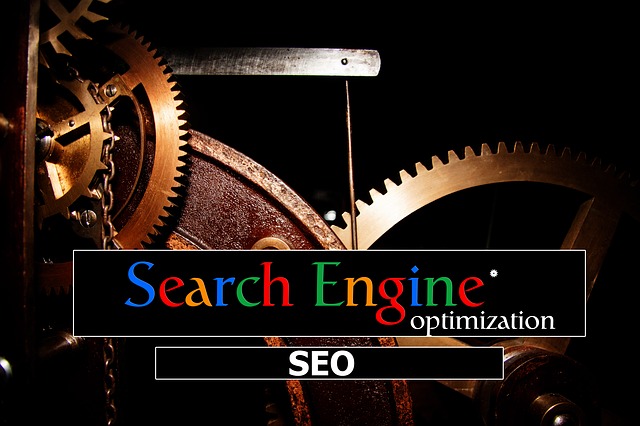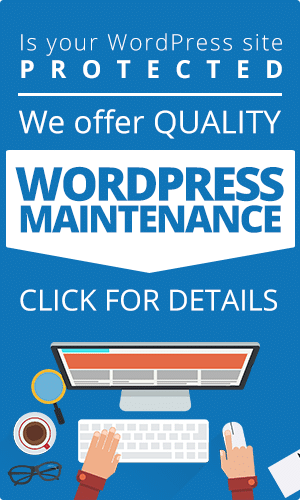WordPress is the most widely-used CMS in the world, and it truly warrants that position of dominance. It’s free, configurable, updated frequently, backed by a massive community, and extremely secure (particularly given that it’s an attractive target to attack) — so it makes all the sense in the world to choose it as the foundation of your website.
There’s more to online success than simply having a strong website with a stable foundation, though. You also need to find ways to be noticed — the internet is vast, and you can easily be missed. One of the key components to getting noticed is online search, of course, considering that most website visits result from Google searches.
And if you want to appear prominently in search results, you need SEO. In this guide to WordPress SEO for beginners, we’re going to cover what SEO actually involves, why organic traffic is the most valuable kind, how you can build an SEO campaign for your WordPress website, and how you can use convenient plugins to your advantage. Let’s begin:
What does SEO actually mean?
SEO stands for search engine optimization, and it broadly refers to any type of activity that is intended (exclusively or primarily) to get a page, or an entire website, appearing more prominently in the rankings for valuable search terms.
There are some misconceptions around — for instance, that SEO is about ranking “at the top of Google”. In truth, a second-page ranking for a hyper-relevant term is much more valuable than a top ranking for a weak term without actionable intent. The goal of appearing in search results is to drive traffic, so an SEO campaign that doesn’t produce an uplift in traffic is a waste of time.
Because Google drives so much of online activity, all using algorithms using undisclosed methods to arrive at results, the SEO industry is both massive and rife with uncertainty. Today’s top SEO tactics might not work tomorrow, because a Google update could render them ineffective. This requires everyone to stay on their toes, and means there’s always something new to learn about SEO, no matter how long you’ve been working on it.
Why organic traffic is so important
Some marketers turn to other tactics to earn visits for their websites. They might run PPC campaigns, bidding to have their ads seen and paying for them when they receive clicks: it’s efficient and economical, and it scales well. They might partner with influencers to generate visits from niche prospects. They might even focus on social media directly, attempting to post with enough potency to get people sufficiently interested to visit their websites.
But while each of these sources can be very useful, the most important type of traffic overall is organic traffic — the kind sent along by search results. Given this, you simply can’t afford to overlook SEO. Here are some big reasons why organic traffic matters so much:
- SEO work generally lingers. Though I noted that Google updates can significantly change rankings, they tend to affect sites that play to the letter of what Google recommends, instead of the spirit. If you create a fantastic piece of evergreen content, for instance, it will continue to bolster your rankings for years to come. This means that organic traffic will keep coming in even when you’re not actively engaging in SEO (when you pause PPC work, the traffic disappears).
- It’s more stable than alternatives. Whether you’re using social media or PPC platforms, you’re at the mercy of strict sets of rules — not only about what you can and can’t post, but also about how you need to frame advertising. And if you slip up (or the rules change beneath your feet), you might not even know about it. Twitter has long been suspected of using shadowbanning to minimize post exposure without letting the poster know — it’s denied it on numerous occasions, but persistently blaming vague bugs and issues doesn’t make for a convincing case. Google is relatively clear.
- Organic visitors stick around. The source of a visit affects the result: someone clicking on a PPC ad is unlikely to stick around for too long (after all, it wasn’t what they were initially looking for), while someone who finds your site after a search might stay for a long visit due to its exceptional relevancy (and return for subsequent visits). If you want the most actionable and reliable traffic, organic is the way to go.
Handling SEO in WordPress
So, now that we’ve established what SEO means and why organic traffic is incredibly important for a thriving website, we can move on to the topic of carrying out SEO work for a WordPress website in particular. WordPress is a strong and modern CMS, meaning it has solid SEO fundamentals out of the box (so to speak), but there’s still work to be done. I’m going to touch upon some vital areas of SEO, explaining how you can polish them on your WordPress site.
Covering technical WordPress SEO For Beginners: The basics
There are various fundamental elements of website design that impact its likelihood to rank well.
Here are just a few of them that you should think about:
- URL structure. This is more important than you might think: by including the main keyword in a post’s URL, you can clarify its nature for search engines. Go to Settings, then Permalinks, and select Post Name as the structure.
- XML sitemap. A sitemap is a map of all the pages on your site, or at least the pages you want indexed. I recommend using the Yoast SEO plugin to generate one, as it will also help you with various other aspects of SEO — though there are other options.
- Metadata. This encompasses everything from your page titles to the alt text you provide for your images. Great metadata makes your page look better to visitors and search crawlers alike, so remember to follow best practices.
Speeding up page loading
Page speed has been a ranking factor for some time now, and it’s an area for which WordPress is often criticized. Because it’s a self-hosted solution by default, and is often laden with many plugins, it can be sluggish — but it doesn’t need to be. Here are some handy tactics for speeding up your WordPress site:
- Using a high-performance host. Even if your site is well-optimized, a weak host will ensure that your loading times drag you down. Avoid the temptation to go with the cheapest hosting available: even paying a little more per month should put you in a much stronger position, so read some reviews and make a change if needed (if you need top performance, try Turbo Hosting).
- Adding a caching plugin. The purpose of a caching plugin is to do some of the page processing work ahead of time so visitors get served smaller files, speeding things up. There are various decent plugins available for WordPress — here’s a list of viable options for you to check out at your leisure.
- Using a CDN. A CDN, or content delivery network, caches resources from your site at different hosting nodes around the country (or even the world). When people try to load your site, it will deliver those cached resources from the nearest node, cutting the response time down. Here’s Kinsta’s useful guide to WordPress CDNs.
- Minifying your pages. The process of minification involves taking the various files that make up your website (featuring everything from CSS to JavaScript) and optimizing them through clearing out redundancies and adjusting load orders to ensure that there’s minimal processing delay. Here are some of the top minification plugins.
- Optimizing your images. It’s important to have crisp high-resolution images, but if you’re not careful, they can end up significantly slowing your site down. You need to compress them as much as possible without hugely affecting the quality (using lossless compression if that suffices, or otherwise using top-notch lossy compression). Here are some good image optimization tips, also featuring various tool recommendations.
- Configuring AMP. AMP stands for accelerated mobile page, and it’s a standard developed by Google to encourage the creation of hyper-optimized mobile-first websites. Fortunately, due to the flexibility of WordPress, you can implement it relatively easily: AMP for WordPress starts at $149 per year for one site, but it may be worth it for you.
- Removing unimportant plugins. This may seem like an odd thing to mention after going through a wide range of plugins, but each of those plugin types is fully justified and almost certain to make your website faster. That isn’t true of every plugin type, and every plugin you have installed will slow things down very slightly — so go through your plugin lineup and uninstall anything you’re not absolutely sure about keeping.
You don’t need to do every one of these things, particularly if your site is already performing at an excellent level. It’s often a balancing act between features and speed, two things that are important for user experience and SEO: when you boost one, the other suffers.
Building valuable links
Linking is a big part of SEO, whether you’re trying to make your site more cohesive or pick up implicit endorsements from popular domains. Here are the key parts of doing more with links:
- Adding links to your content. You have total control over what you include in your content, and if you generally don’t bother with links, then you’re making a big mistake.
- External links are vital for demonstrating expertise and offering value: it doesn’t matter if you send someone away to read something, because if they appreciate the recommendation, they’ll come back and spend even more time on your site.
- Internal links help you circulate traffic throughout your website. If you include a link to some of your old blog posts in your newest blog post, then even if just a handful of people who read your update bother to click on them, you’ll have picked up some extra time on your site. And by choosing your anchor text very carefully, you can further detail the structure of your site.
- Earning all-important backlinks. Every so often there are rumblings that backlinks no longer matter for rankings, but it’s never true, and it’s realistically never going to be true. Search engines are fallible, and they need the guidance of people linking to different sites to figure out what people actually want to recommend. Here are some tips for earning more backlinks:
- Include social sharing buttons. While links offered through social media posts or emails aren’t very valuable to search algorithms, they do get more people viewing your website in a positive light — and the more positive visits you receive, the more likely people will be to blog about your site.
- Reach out to relevant sites. There’s nothing wrong with being self-promotional, so if you think your site is worth it, get in touch with compatible sites (not competitors) and link them to some of your work. If they like it, they might link to it, but don’t ask them to link to it, because that isn’t in keeping with the spirit of good SEO, and they’ll probably dislike the idea (or want to charge you).
Creating great content
There’s one more thing we need to address when it comes to SEO, and that’s the essential element that so often gets ignored: creating great content. You can do all the optimization you like, but it won’t turn a mediocre blog post into a popular resource, so you have to start out with excellent content that’s truly worthy of being ranked highly.
If you’re looking for a secret to this, you can stop looking — there isn’t one. There are some shortcuts to help you along (such as the skyscraper method of finding great pieces of content and aiming to fractionally improve upon them), but it’ll take hard work and dedication no matter what approach you take.
In this WordPress Seo for beginners guide, we’ve been through what SEO means, covered the incredible importance of the organic traffic that SEO aims to generate, and set out a variety of tactics for implementing SEO techniques on a WordPress site. Think about how you can take advantage for your site, because it’s definitely something worth pursuing.
Need help implementing the perfect WordPress SEO startegy? We’d love to help, learn more about our affordable SEO services today!
We are proudly featured by DesignRush as one of the best SEO marketing companies.






